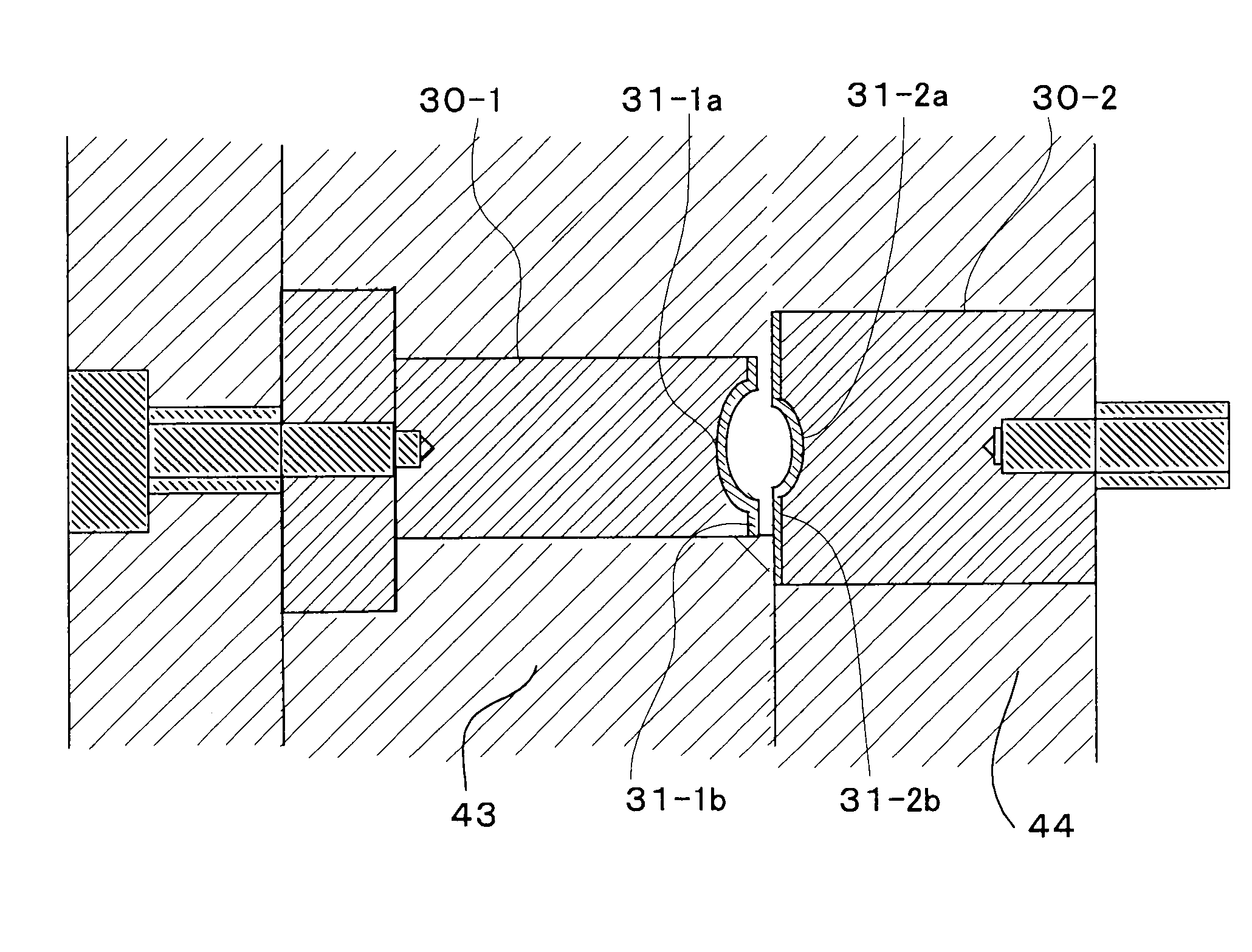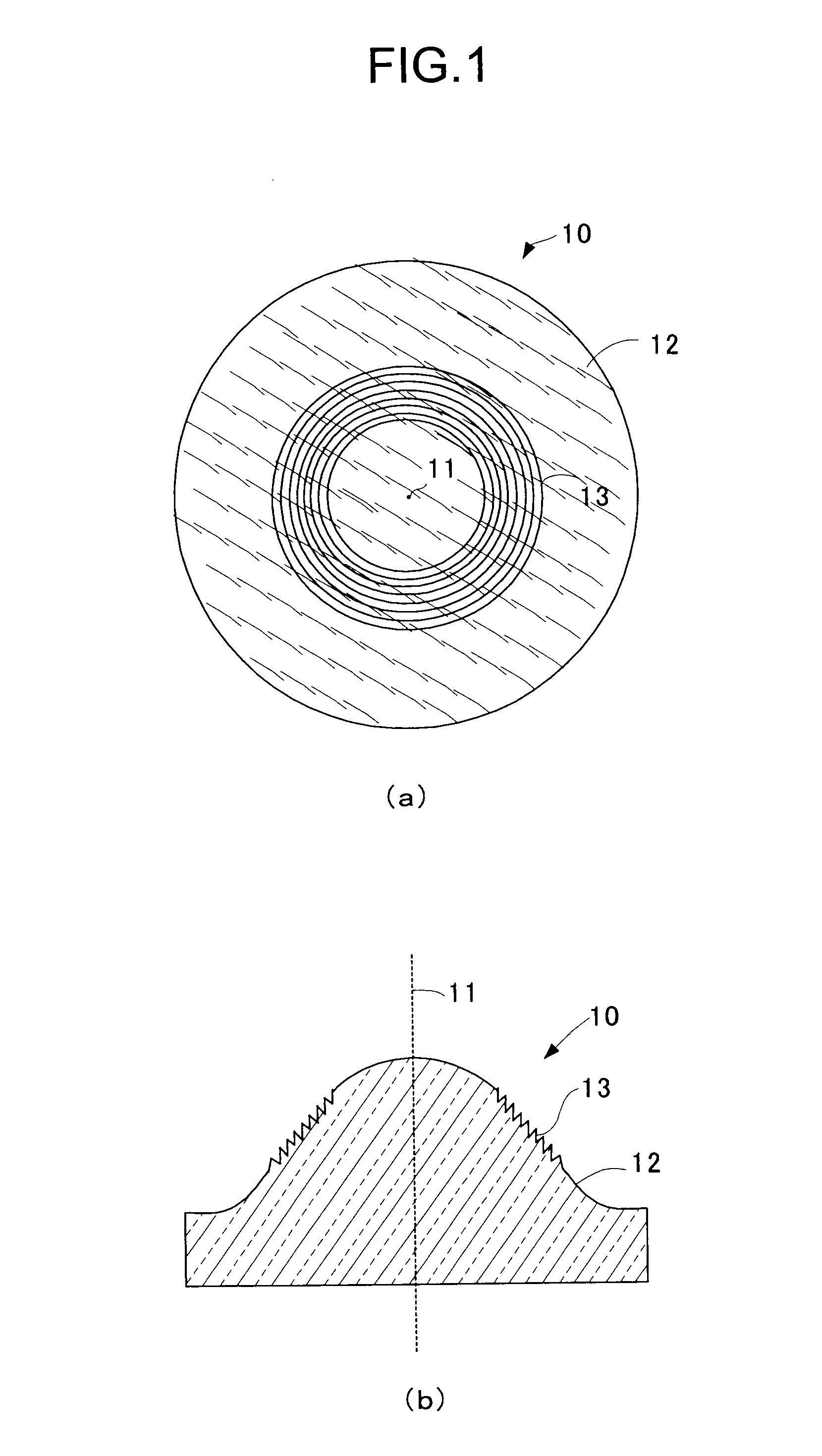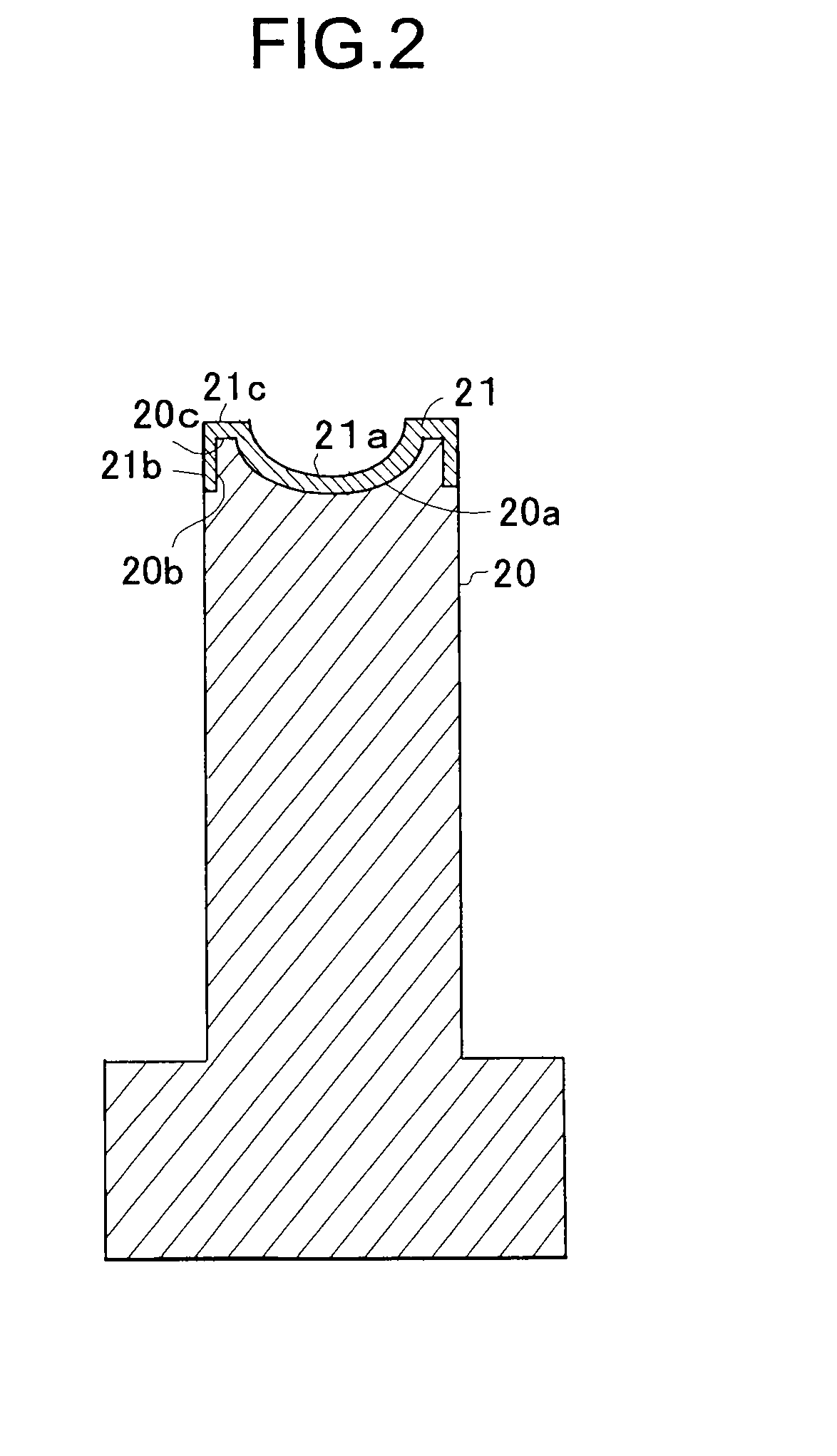Corrosion and heat resistant metal alloy for molding die and a die therewith
a metal alloy and mold technology, applied in glass pressing apparatus, glass making tools, glass making apparatus, etc., can solve the problems of amorphous alloys that require characteristics such as heat resistance, oxidation resistance, and resistance to glass bond formation, and the based metal glass alloys disclosed are not suitable for the mold, so as to reduce the time and cost of manufacturing the mold, excellent workability, and heat stability
- Summary
- Abstract
- Description
- Claims
- Application Information
AI Technical Summary
Benefits of technology
Problems solved by technology
Method used
Image
Examples
example 1
Search of Pt Alloys Using the Combinatorial Method
[0111]To find out metallic alloy compositions that show amorphous phase, many samples having different compositions were prepared at once using a new material synthesizing apparatus disclosed in JP-A 2004-315939 (KOKAI) and combinatorial material evaluation substrate disclosed in JP-A 2005-131915 (KOKAI), and were evaluated.
[0112]
[0113]The experimental apparatus is constructed mainly by discharge controlling unit, power supply, cathodic arc plasma gun (CAPG), stainless steel chamber of φ309 mm×396 mm, and vacuum evacuating system. FIG. 5 shows the layout of three CAPGs and a substrate of the apparatus using schematic cutaway figure.
[0114]In (a), (b) and (c) of FIG. 5, the first CAPG 51, the second CAPG 52 and the third CAPG 53 are disposed at each apex of regular triangle on a plane in the chamber 50. The dimensions of these cathodes are 10 mm in their diameters and 22.3 mm in their lengths. Substrate 54 is disposed down below the pl...
example 2
Preparation and Evaluation of Pt Base Alloy Films
[0136]Films having the compositions of Pt48Hf37Ni15 and Pt45Hf36Ni19 were formed using the multi-source simultaneous sputtering apparatus. The crystallization temperature Tx values of the films were evaluated using the X-ray diffraction method and the grass temperature Tg values were evaluated using an indenting test method. Furthermore, measurement of tensile strength was conducted. From these results, it was found that the Pt48Hf37Ni15 film has Tx of about 700 degrees centigrade, and a dent formation due to the indenting test was observed showing an existence of metallic glassy state as the Tg evaluation of the film. The tensile strength of the film was 0.30 Gpa. For the Pt45Hf36Ni19 film, Tx of about 550 degrees centigrade and a dent due to the indenting test was observed as the Tg evaluation result confirming existence of a metallic glassy state. The tensile strength of the film was 0.37 Gpa.
[0137]In order to obtain increased mech...
example 3
Pt—Ir—Zr Alloys
[0139]To find material having higher strength and higher corrosion resistance, the composition range showing amorphous phase of Pt—Ir—Zr ternary alloy system containing Ir in Pt alloy was investigated using the combinatorial material experimental apparatus explained above. The results are shown in FIG. 13.
[0140]At first, it seemed difficult to obtain amorphous phase in the Pt—Ir-alloy system because the alloy forms solid solution over all composition ratios. However, compositions showing amorphous phase were realized by including Zr as the third element.
[0141]Making full use of this finding as a base, each film having Pt42Ir17Zr41 and Pt38Ir25Zr41 composition was prepared using the multi-source simultaneous sputtering apparatus and evaluation of the crystallization temperature Tx using the X-ray diffraction method and glass transition temperature Tg using the indenting test method were conducted. Further, tensile strength measurement was performed. As the results, it ...
PUM
| Property | Measurement | Unit |
|---|---|---|
| Length | aaaaa | aaaaa |
| Percent by atom | aaaaa | aaaaa |
| Percent by atom | aaaaa | aaaaa |
Abstract
Description
Claims
Application Information
 Login to View More
Login to View More - R&D
- Intellectual Property
- Life Sciences
- Materials
- Tech Scout
- Unparalleled Data Quality
- Higher Quality Content
- 60% Fewer Hallucinations
Browse by: Latest US Patents, China's latest patents, Technical Efficacy Thesaurus, Application Domain, Technology Topic, Popular Technical Reports.
© 2025 PatSnap. All rights reserved.Legal|Privacy policy|Modern Slavery Act Transparency Statement|Sitemap|About US| Contact US: help@patsnap.com



